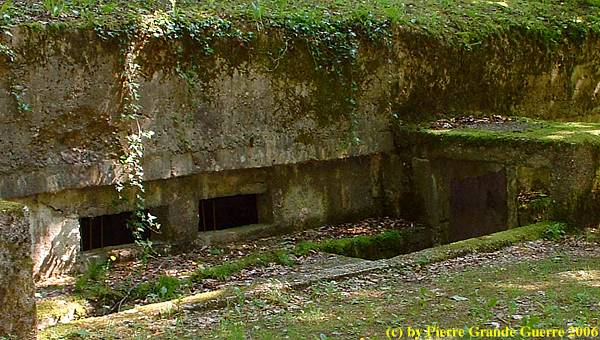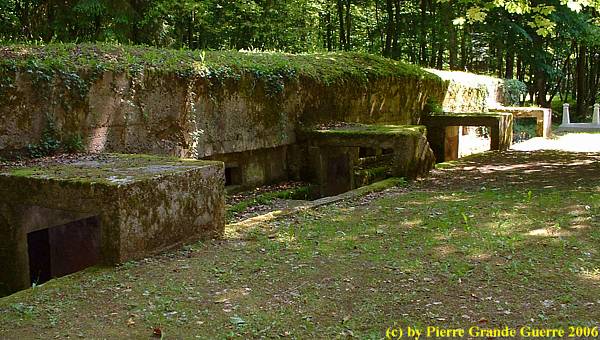VERDUN - Bois des Caures - Lt. Col. Driant's Command Post
Years of visit: 2006, 2009
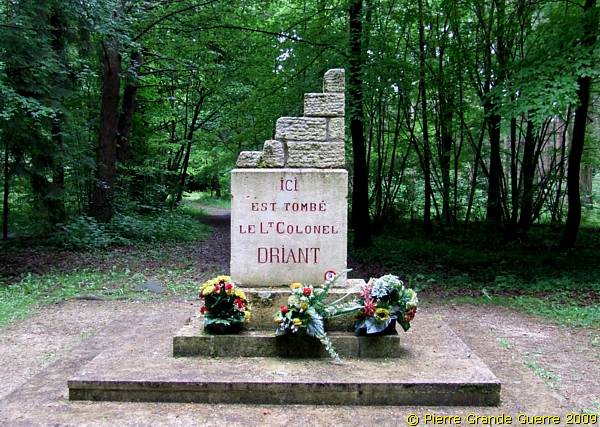
Samogneux, 15 km north of
Verdun, is our point of departure.
We follow the yellow D 905, northward, to the Command Post of the French legendary
Colonel Driant.
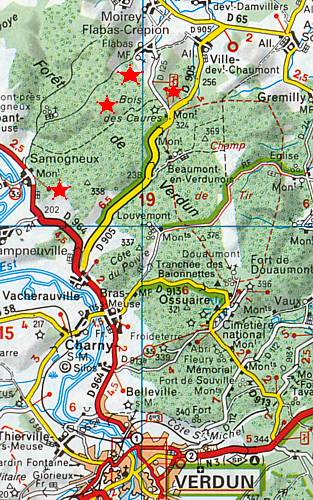
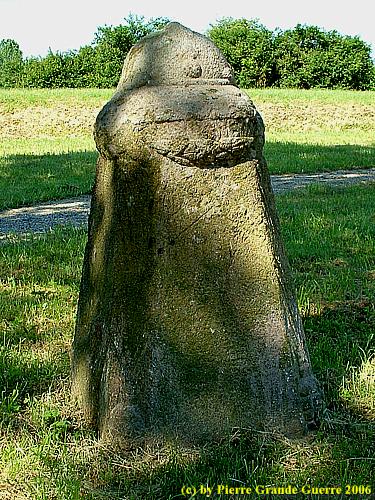
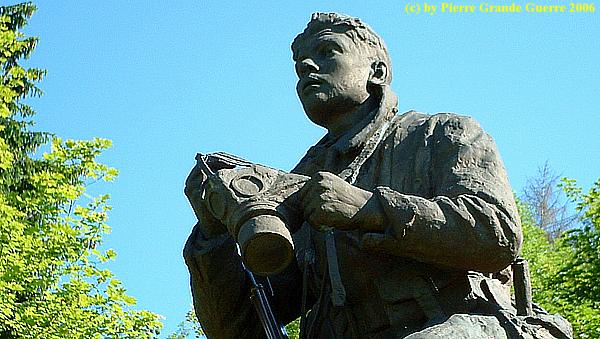
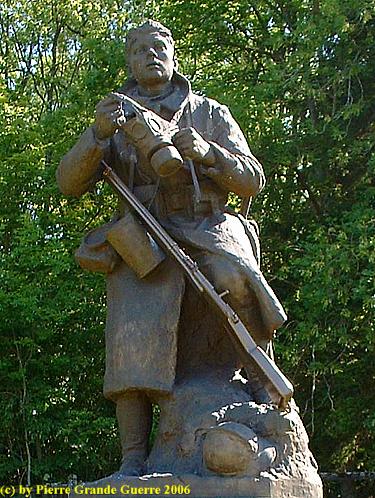
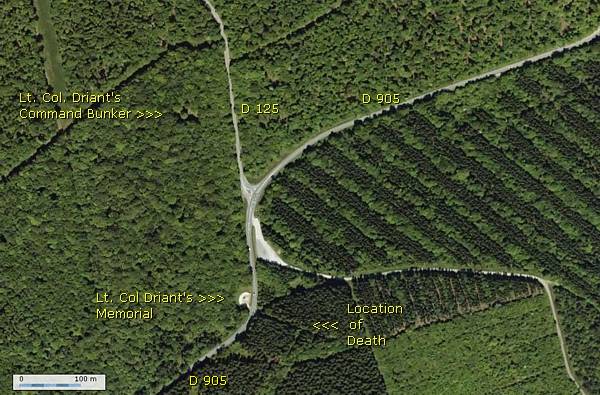
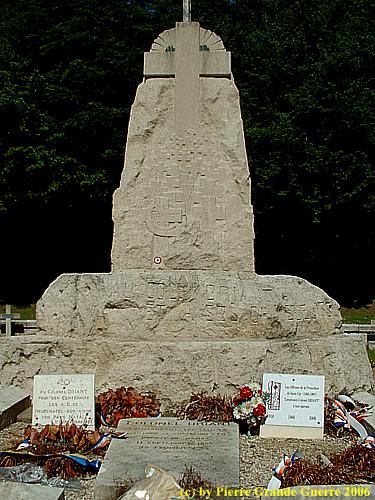
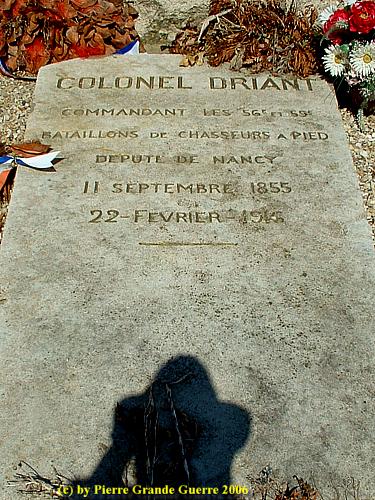
("You know very well, that they never have touched me!")
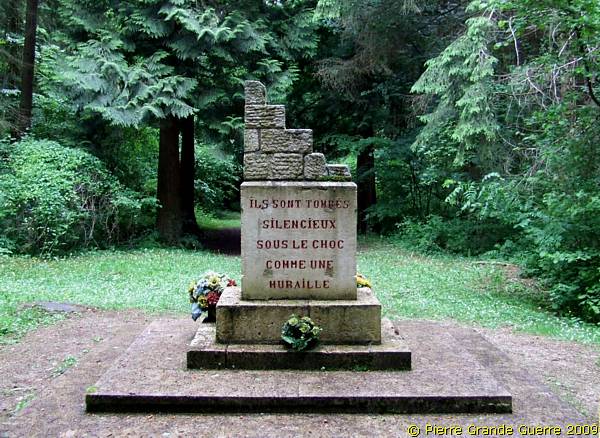

Lieutenant Colonel Emile Driant
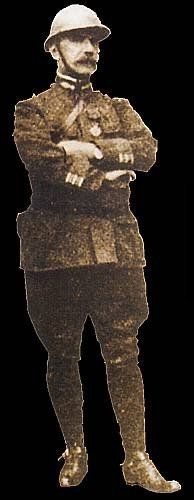
Before the Battle of Verdun broke out, Driant had protested heavily with General Joffre about General Galliéni's recent withdrawal of troops and weapons from this front sector in the Bois des Caures.
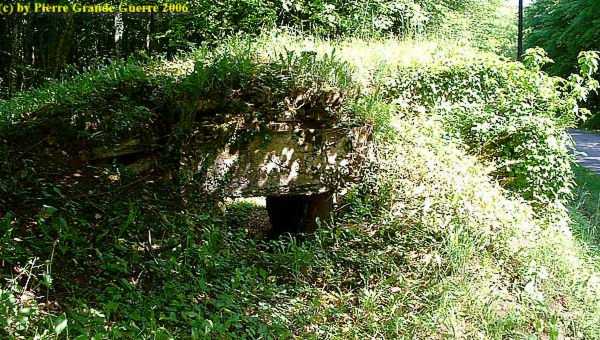
East side of the bunker.
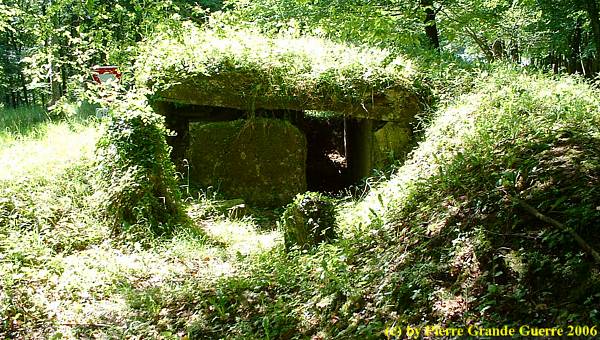
View of the interior of this bunker.
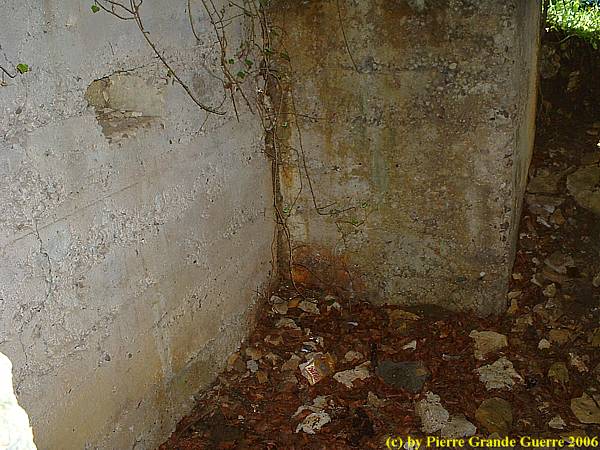

Battle in the Bois des Caures, 21 February 1916
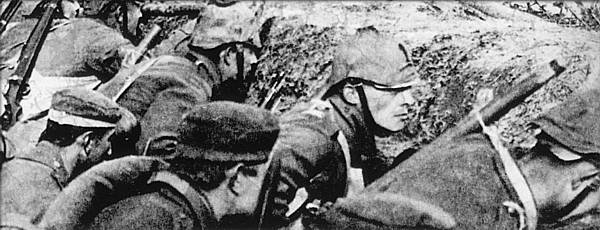
Until the Battle of Verdun this sector of the front line had been relatively "quiet".
At dawn,on 21 February 1916, German 210 mm shells bombarded the trees in the wood, the French positions and artillery guns.
At 16.00 hrs the German infantry troops, with their "pickles" removed from their helmets, "Pickelhaubes", attacked the French 72th and 51st Divisions.
Driant disposed in this wood over a large network of three lines of trenches and bunkers.
Two whole sections of troops were destroyed by the bombardment.
By the end of the bombardment only one fifth of the Chasseurs à Pied ( Light
Infantry Troops
) were left to defend their positions.
During the German infantry attack the French Soldiers defended ferociously every inch of their positions with bayonets and handgrenades. At the end of the day the casualties on the side of the 18th German Army Corps were enormous. They did not succeed to take over the French positions in the wood yet.
But this would take only one day more.

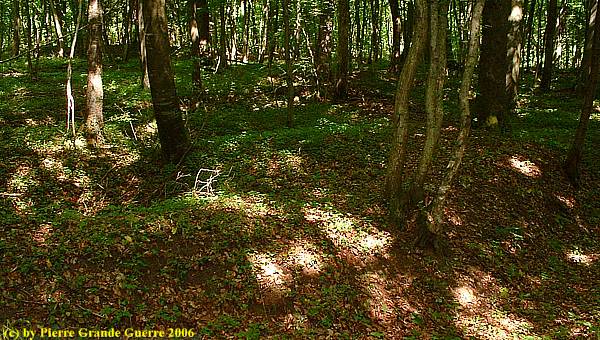
Two shell holes caused by German field artillery. The wood is covered with these shell holes.
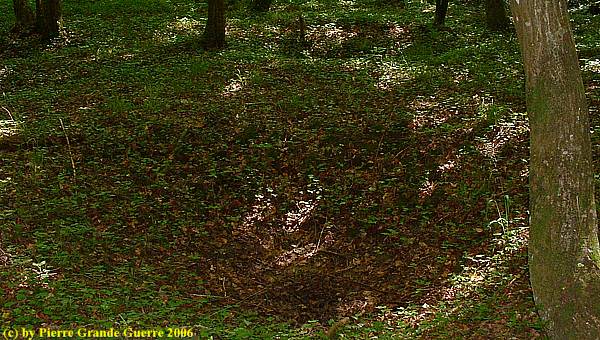
A relic of a French side board in a trench.
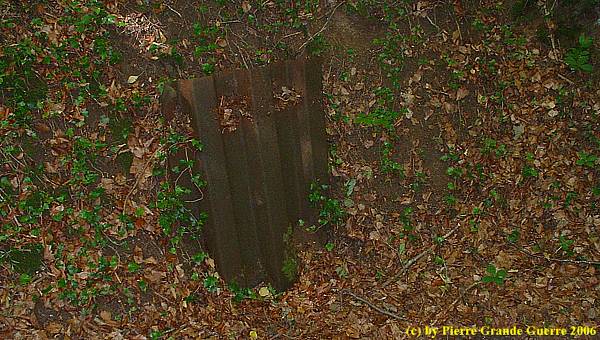
Another waterfilled shell hole.
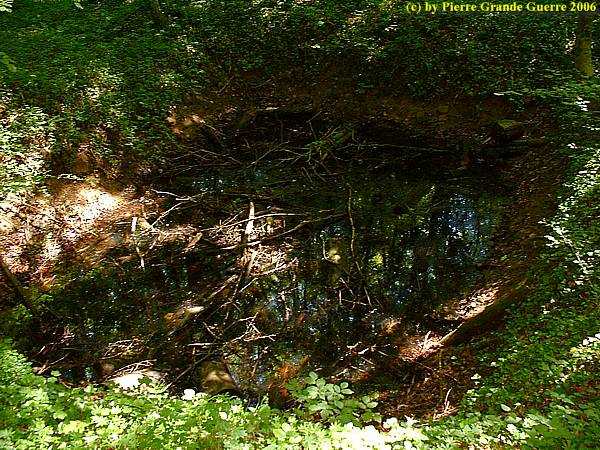
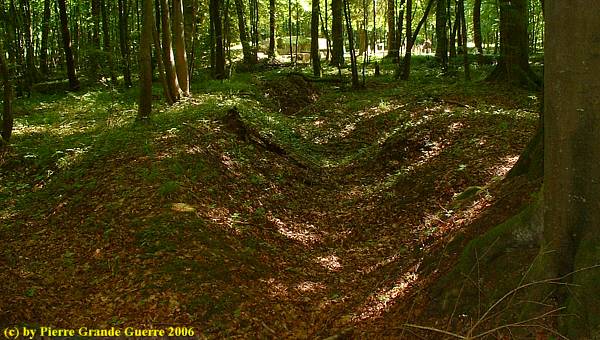
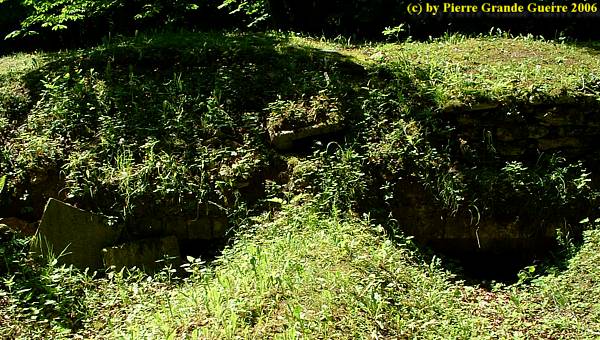
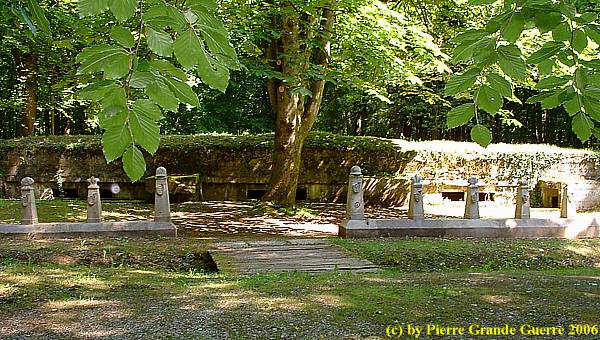
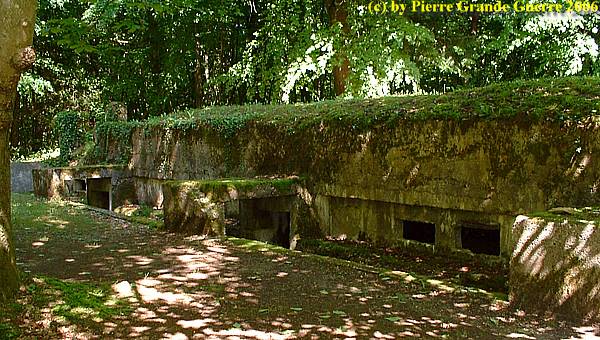
The two entrances to the Command Post Bunker.
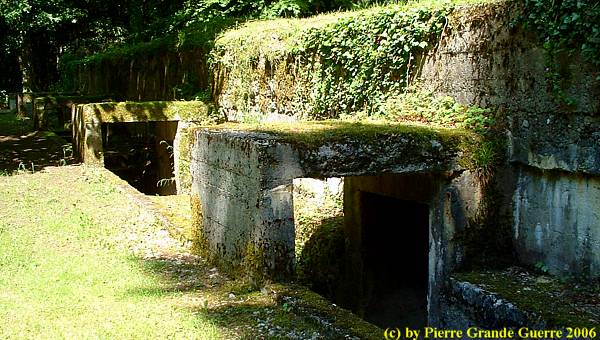
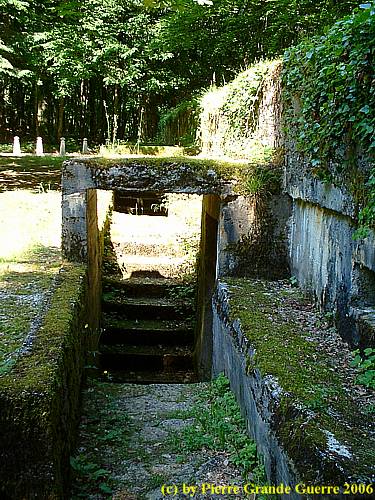
The morning of 22 February 1016
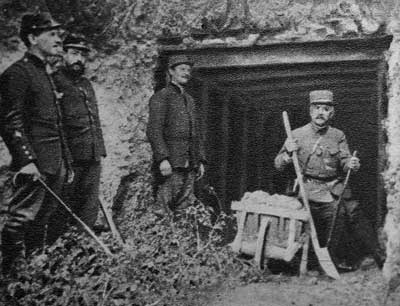
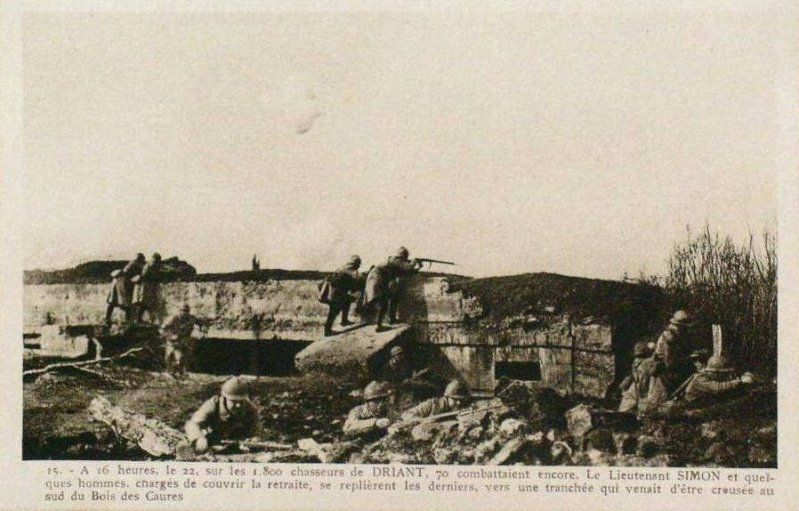
"You know very well, that they never have touched me!"
A moment later Driant received a bullet in his head, and died instantly.
The loss of the Caures Wood would launch another three days of fierce combat fighting in the adjacent front sectors.
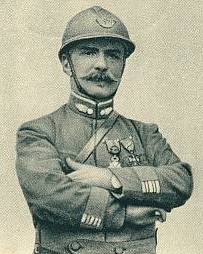
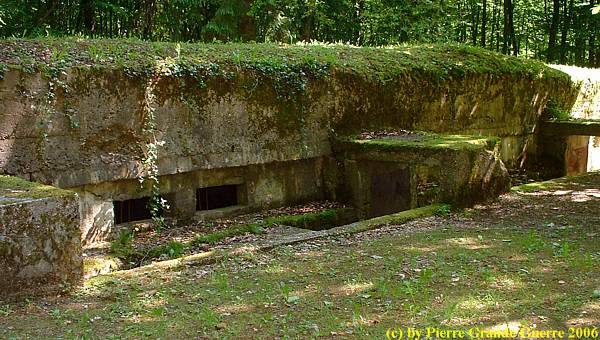
Of course I entered the bunker for some interior views.

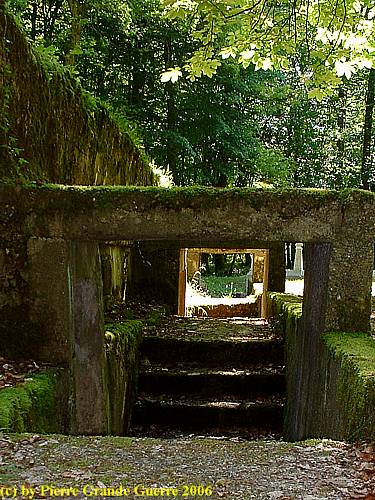
A view of the interior of the bunker.
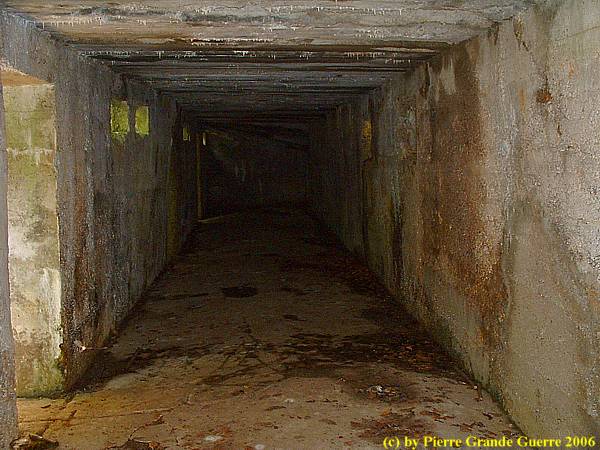
Another view of the interior of the bunker.
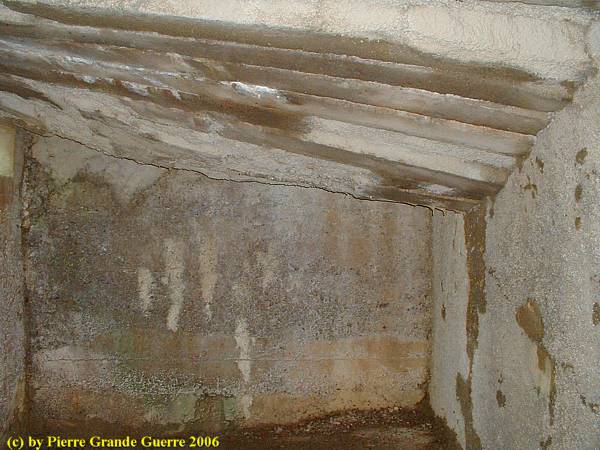
Two last images of the Command Post.
